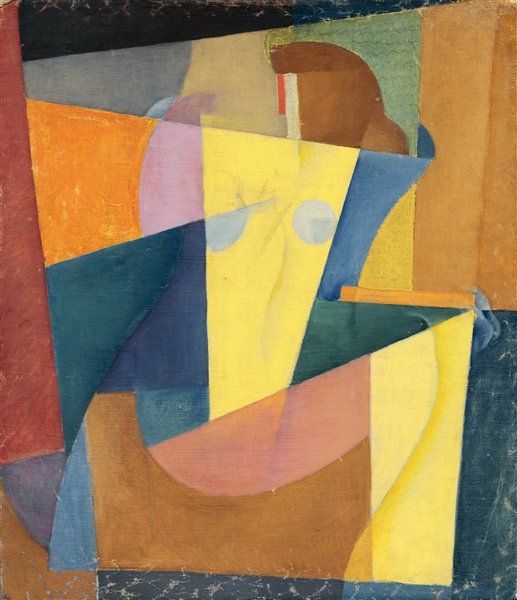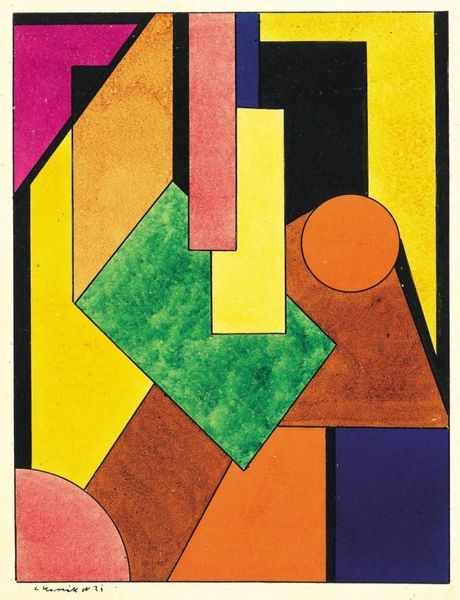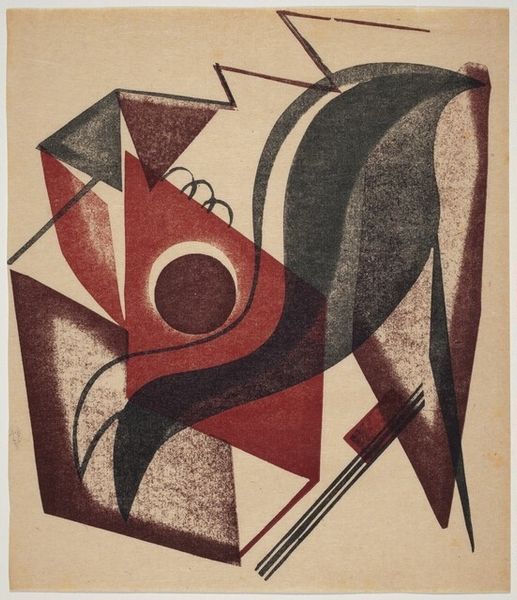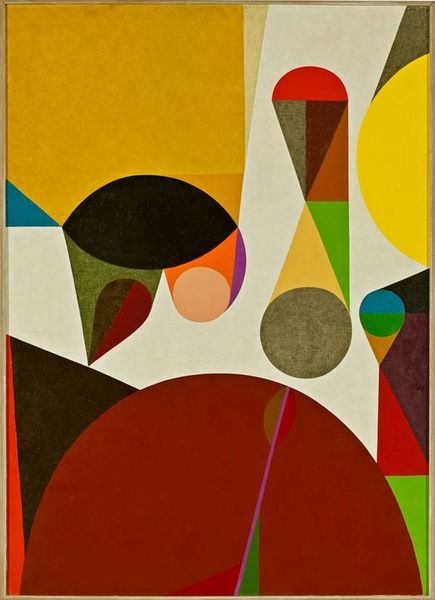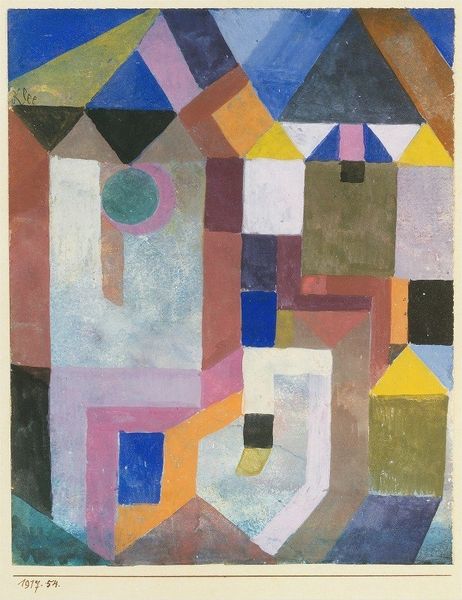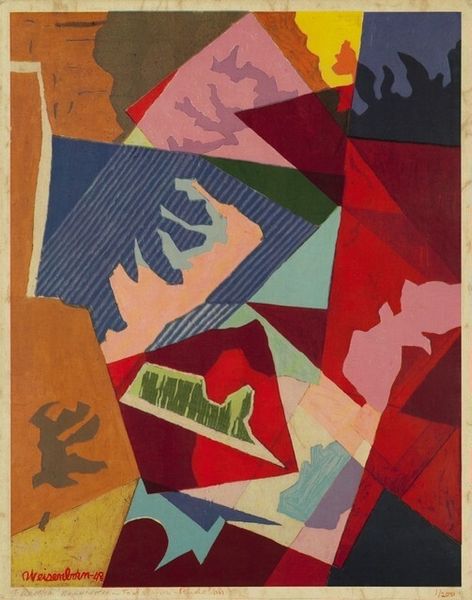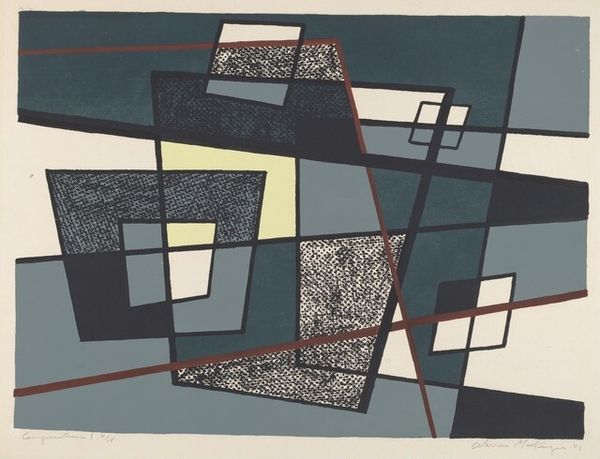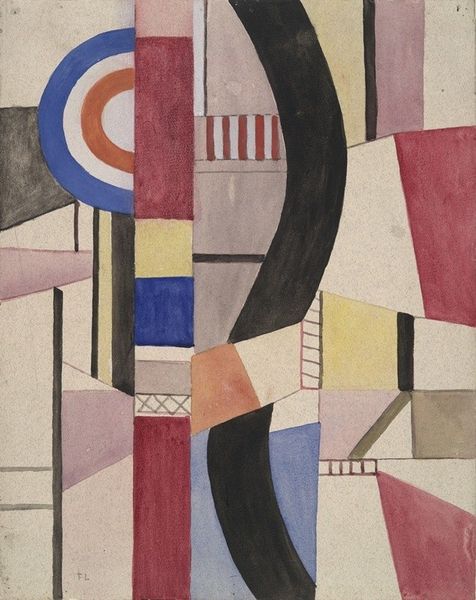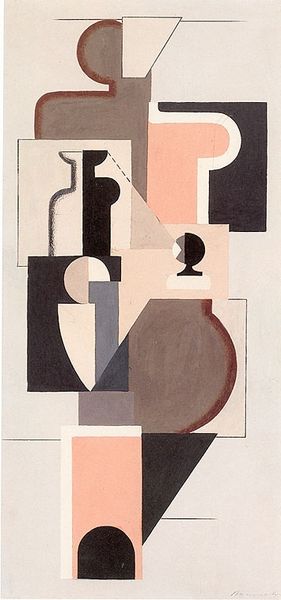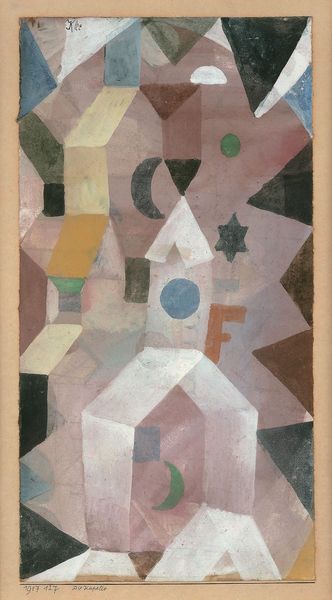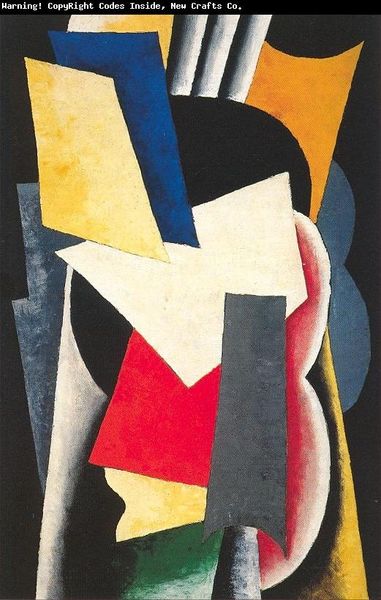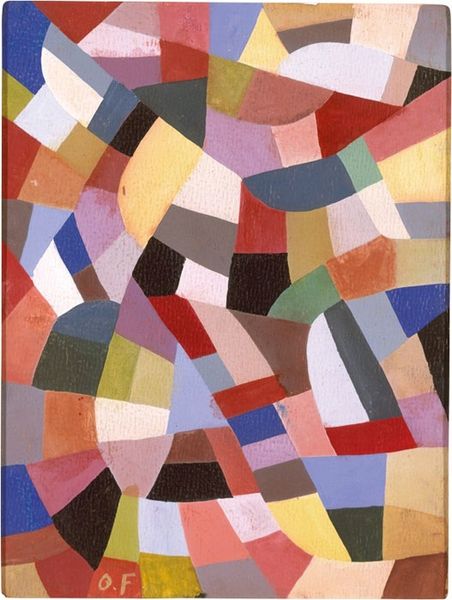
Dimensions: Image: 574 x 430 mm Sheet: 498 x 365 mm
Copyright: National Gallery of Art: CC0 1.0
Curator: This piece really grabs the eye, doesn't it? It’s a work titled "Double Portrait" created in 1946 by Warren Mackenzie. It seems to be a watercolor over an oil painting or print, though the mixture is quite intriguing. What strikes you first about it? Editor: The tension. All those sharp angles and converging lines—they create a sense of unease, a kind of visual dissonance. The limited color palette adds to that feeling; the muted blues and browns feel almost claustrophobic. Curator: Claustrophobic… that’s interesting. Consider Mackenzie's background and the materials he was likely working with at this time. World War II had just ended, resources were scarce. Do you think this affected not just his choice of color and form, but his approach to representing, perhaps, a strained social environment? Editor: That's possible. But the strength here for me lies in its compositional integrity. Note the way the artist uses geometric shapes, each plane carefully considered. Observe, for example, how that single thin line bisects the composition, directing the eye and fragmenting what we perceive as "portrait." This abstraction, for me, reveals more about the human condition through form than it could through a more representational mode. Curator: Right. While your read of formal construction offers compelling insight, I would posit the potential economic and material realities shaping production. If you are rationing material and are confined physically or socially, working with sharp and angular depictions of figures that seem in conflict is interesting in the framework of labor or the economics of expression, particularly in the shadow of a global conflict. Editor: It’s a strong hypothesis. Either way, Mackenzie, it seems, invites the viewer to participate, doesn't he? To complete the image, to make sense of the visual puzzle. Curator: Indeed. The post-Impressionist echoes definitely resonate. The process is exposed but also asks us to interpret a specific set of influences to arrive at how the piece may function or come together as an expressive or even documentary moment. Editor: I agree. Whether driven by social context or formal intention, or, most likely, both, it really holds the viewer's attention, and reveals something new upon each encounter. Curator: For me, exploring Mackenzie's choices in materiality really amplifies our understanding. Editor: And for me, seeing how those choices result in such a uniquely arresting image offers another facet of understanding the piece in this time period.
Comments
No comments
Be the first to comment and join the conversation on the ultimate creative platform.
